By Louis S. Luzzo, Sr.
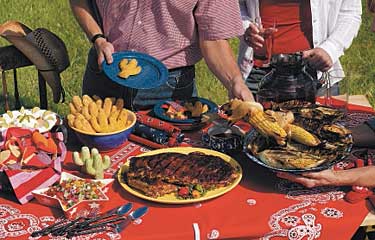 When I was a child growing up in Northern NJ and well into my teens, one of the things I loved most about the advent of summer was our famous family barbecues. Now mind you, I grew up in an full blooded Italian (Napolitan/Calabrese) family and we had a barbecue almost every weekend, starting with Memorial Day in May and ending with Labor Day in September and always consisting of enough food and drink to supply a small army regiment.
When I was a child growing up in Northern NJ and well into my teens, one of the things I loved most about the advent of summer was our famous family barbecues. Now mind you, I grew up in an full blooded Italian (Napolitan/Calabrese) family and we had a barbecue almost every weekend, starting with Memorial Day in May and ending with Labor Day in September and always consisting of enough food and drink to supply a small army regiment.
And, like most Italian households, it seems the entire family, from aunts, uncles, cousins, not to mention their friends, the town mayor and anyone else that might be passing by the house on these Sunday afternoons, seemed to be in attendance each and every week. I don’t ever recall there being less than 30-40 people at these outdoor summertime galas. In fine Italian tradition, late in the day, it always seemed as if an entirely new batch of guests would arrive and the grill would be relit for the ‘second round.’ Wine, beer and soda flowed freely and I now marvel at how after partying till the wee hours of Monday morning, my parents, along with all my aunts and uncles, got up a few scant hours later and went off to work as if nothing had transpired the day and night before. Only after I was an adult and repeated that same process, did I realize that not much got done at work in the first few hours of every Monday.
 I also learned a great lesson from my mom and dad about neighborhood relations. You see, it’s a given that, where a group of Italians are gathered to eat and drink, the decibel level produced by those playing Bocce and arguing the pallina, or the Acey-Ducey card game, the horseshoe match, or the stickball game being played in the street in front of the house, will automatically produce a din that will rise to just below a sonic boom. When I asked my mother years later why the neighbors never complained about the noise, she reminded me that, "With most of them in attendance, who was gonna complain?"
I also learned a great lesson from my mom and dad about neighborhood relations. You see, it’s a given that, where a group of Italians are gathered to eat and drink, the decibel level produced by those playing Bocce and arguing the pallina, or the Acey-Ducey card game, the horseshoe match, or the stickball game being played in the street in front of the house, will automatically produce a din that will rise to just below a sonic boom. When I asked my mother years later why the neighbors never complained about the noise, she reminded me that, "With most of them in attendance, who was gonna complain?"
 My parents actually had a Barbecue Budget Account, much like most folks have a Christmas Club Account. Yes, these people were serious about their outdoor parties. That fact became quite evident to any and all our neighbors when the local beverage distributor, the local chips and pretzel vendor and yes, even the local meat purveyor, all had us scheduled for regular Sunday stops during the summer. Looking back now at what I just assumed was ‘what everybody did, I realize how odd that must have seemed to our neighbors. Each Sunday morning, huge trucks, double parked in front of our house, their drivers hand trucking in cases of root beer, hot dogs, hamburgers, steaks, chops and more, all just to supply our family with the day's ‘barbecue delights.’
My parents actually had a Barbecue Budget Account, much like most folks have a Christmas Club Account. Yes, these people were serious about their outdoor parties. That fact became quite evident to any and all our neighbors when the local beverage distributor, the local chips and pretzel vendor and yes, even the local meat purveyor, all had us scheduled for regular Sunday stops during the summer. Looking back now at what I just assumed was ‘what everybody did, I realize how odd that must have seemed to our neighbors. Each Sunday morning, huge trucks, double parked in front of our house, their drivers hand trucking in cases of root beer, hot dogs, hamburgers, steaks, chops and more, all just to supply our family with the day's ‘barbecue delights.’
For the most part, the barbecue is an 'American' tradition, but I think you'll be surpised at its origins and, those who were its biggest fans. I’m sure most of you can recall some of these great times and hopefully, you have carried on these traditions. I’m going to take you on a small journey into the history of Barbecue, its origins and how it has evolved with the latest gadgets, grills and technology.
I hope this has brought back memories of those innocent days of family and summer fun. I know it has for me.
Barbecue History
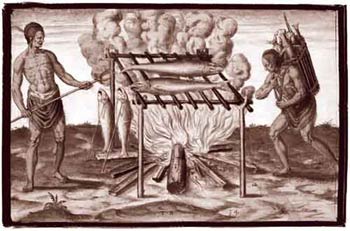
The most plausible theory claims that the origin of the word "barbecue" is a derivative of the West Indian phrase "barbacoa," which describes a method of slow-cooking meat over hot coals. The Oxford English Dictionary traces the word back to Haiti, and others claim that "barbecue" might actually come from the French phrase "barbe a queue," meaning "from head to tail."
In America, barbecue can be traced back to colonial times, with a Virginia law written in the 1600s providing that, "discharging of firearms at a barbecue was prohibited."
 In George Washington's diaries, one entry, dated May 27, 1769, describes him traveling to Virginia for a barbecue. What I find most fascinating about his subsequent entries over the next few years, is that it reveals George to be the very antithesis of what we have come to believe with regard to his personality and demeanor. To most of us, the 'Father of Our Country' is portrayed a stoic and serious individual, yet most of his entries concerning barbecue, are usually followed by entries about his 'laying low for a few days and doing nothing of note.' Seems ol' George was a partier at heart and we might very well have documentation of the first Presidential Hangovers! Go George....party like it's 1799!
In George Washington's diaries, one entry, dated May 27, 1769, describes him traveling to Virginia for a barbecue. What I find most fascinating about his subsequent entries over the next few years, is that it reveals George to be the very antithesis of what we have come to believe with regard to his personality and demeanor. To most of us, the 'Father of Our Country' is portrayed a stoic and serious individual, yet most of his entries concerning barbecue, are usually followed by entries about his 'laying low for a few days and doing nothing of note.' Seems ol' George was a partier at heart and we might very well have documentation of the first Presidential Hangovers! Go George....party like it's 1799!
In 1820, in a letter to her grandfather, Thomas Jefferson, Ellen Randolph wrote him of 'a great barbecue' held on the Fourth of July in Charlottesville. By that time, Independance Day barbecues had become the norm.
It is even recorded that upon the marriage of Abraham Lincoln's parents, on June 12, 1806, the 'reception' was a barbecue. From the book, "Lincoln: The Prairie Years, 1927," written by Carl Sandburg, a guest at the wedding, Christopher Grahm wrote, "We had bear meat, venison, wild 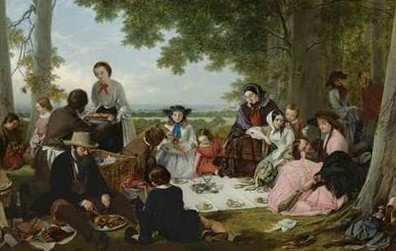 turkey and ducks eggs, both wild and tame, maple sugar lumps tied to a string to bite off with coffee or whiskey, syrup in gourds, peaches and honey, a whole sheep roasted in a pit over coals of burned wood and covered with green boughs to keep the juices in."
turkey and ducks eggs, both wild and tame, maple sugar lumps tied to a string to bite off with coffee or whiskey, syrup in gourds, peaches and honey, a whole sheep roasted in a pit over coals of burned wood and covered with green boughs to keep the juices in."
So as you can see, the tradition of gathering with your friends to cook some sort of meat over wood or coal outdoors seems to have been around for centuries. Today the term barbecue has a whole new meaning, and the American South has staked its claim to being the 'true' definition of barbecue. Though I am covering the event called barbecue, there are distinctions between the noun barbecue and the verb barbecue, with grilling having nothing to do with one and all to do with the other. Let's explore the specifics.
The Difference Between Grilling and Barbecue
This is a question that is asked by many, but not widely known or understood. A lot of the confusion lies in the fact that people often use a grill for grilling and barbecue. Where a smoker is concerned, barbecue is the correct definition.
Grilling
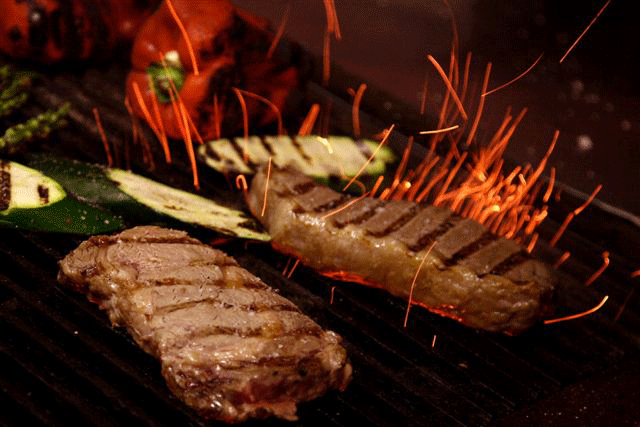 Grilling is a high heat cooking method. Food is cooked directly over coals (either wood or charcoal briquets) and cooking time is usually a matter of minutes. Grilling temperatures are usually in excess of 500 degrees Fahrenheit, and food is cooked close to the heat source. The high heat chars the surface of the food, seals in the juices and creates a smoky caramelized crust. Grilling is the oldest, most widespread and most forgiving method of cooking. Rich and poor alike practice it on six continents in restaurants, street stalls, and backyards.
Grilling is a high heat cooking method. Food is cooked directly over coals (either wood or charcoal briquets) and cooking time is usually a matter of minutes. Grilling temperatures are usually in excess of 500 degrees Fahrenheit, and food is cooked close to the heat source. The high heat chars the surface of the food, seals in the juices and creates a smoky caramelized crust. Grilling is the oldest, most widespread and most forgiving method of cooking. Rich and poor alike practice it on six continents in restaurants, street stalls, and backyards.
Barbecue
Barbecuing, by contrast, lies at the opposite end of the spectrum from grilling. It is a long, slow, indirect, low-heat method that uses smoldering logs or charcoal and wood chunks to smoke-cook the food. Barbecue temperatures are usually between 200 and 300 degrees Fahrenheit. This low heat generates smoke, and this smoke gives barbecue its characteristic flavor. The heat source in 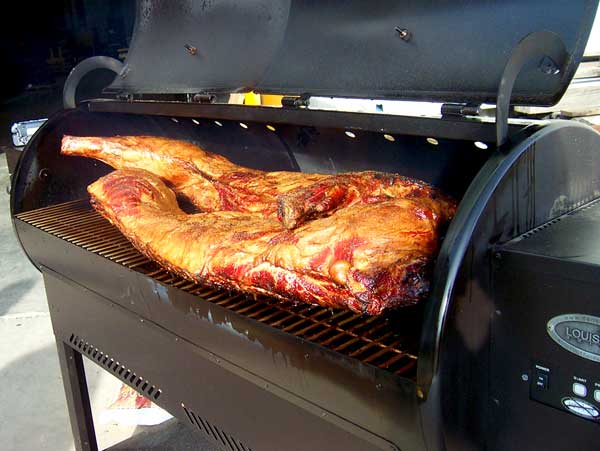 many cases is often completely separate from the cooking chamber, which contains the actual food.
many cases is often completely separate from the cooking chamber, which contains the actual food.
This method of cooking is ideally suited to large pieces of meat such as whole pigs. It is also perfect for cuts with lots of tough connective tissue, such as brisket or spareribs. Traditionally, barbecue was most associated with the poorer classes, who generally, were unable to afford more expensive cuts of meat.
More recently a hybrid method of cooking, Indirect Grilling, has become very popular. This method bridges the gap between barbecue and grilling. As with barbecuing, food is not cooked directly over coals. But the actual cooking takes place in the same chamber as the heat source, and temperatures usually range between 350 and 400 degrees Fahrenheit. Wood chips or chunks are often placed on the heat 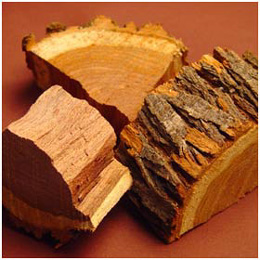 source to generate smoke for flavor. Indirect grilling effectively transforms your barbecue grill into and outdoor oven, which is perfect for cooking larger cuts of meat such as prime rib and turkey. I have used this method myself and it consist of lighting (in the case of gas grills, one side of the grill for the heat source, and the placement of the meat on the unlit' side of the cooking surface.
source to generate smoke for flavor. Indirect grilling effectively transforms your barbecue grill into and outdoor oven, which is perfect for cooking larger cuts of meat such as prime rib and turkey. I have used this method myself and it consist of lighting (in the case of gas grills, one side of the grill for the heat source, and the placement of the meat on the unlit' side of the cooking surface.
Indirect grilling gives you the best of both worlds, grilling and barbecuing. The charcoal flavor from grilling and the tenderness and smoky flavor from barbecue. Whereas the flavor of true barbecue is hard to beat, the trade-off is that it takes a lot longer than grilling or indirect grilling.
Barbecue Facts
Three out of four U.S. households own a barbecue grill.
When it comes to demonstrating their barbecue prowess, men still dominate the actual cooking.
Bigger families (3 or 4 members) barbecue more often.
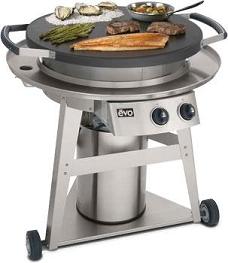 Grilling year 'round is more common among gas grill owners (64%), but charcoal chefs (41%) also brave the elements, especially those with convenient cart-type covered grills. Wood smokers and electric grills often are used throughout the year as well.
Grilling year 'round is more common among gas grill owners (64%), but charcoal chefs (41%) also brave the elements, especially those with convenient cart-type covered grills. Wood smokers and electric grills often are used throughout the year as well.
In America, the Northeast leads the way as tops in the barbecuer category, followed by North, Central, South and West.
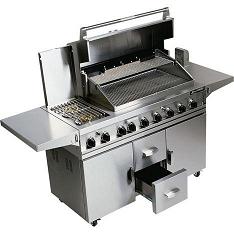 Charcoal briquets are used by nearly all (95%) charcoal grill owners, with more than half using them exclusively.
Charcoal briquets are used by nearly all (95%) charcoal grill owners, with more than half using them exclusively.
As people master barbecuing, they want grill features that turn their backyards into complete outdoor kitchens and make cooking a wide variety of foods easier and safer. About one out of four gas grills now has an extra burner for cooking side dishes. Features considered most important by gas grill buyers include a large cooking surface, shelves, side burners, grease catchers and a fuel gauge.
Tongs and long-handled forks are the utensils owned by most barbecuers, but cleaning brushes and long-handled  spatulas are not far behind.
spatulas are not far behind.
Although people have greatly expanded their cookout repertoire, and every part of the meal is now cooked on the grill, the foods that top the "cooked frequently" list have not changed much. The most popular foods for the grill are hamburgers, steak, hot dogs and chicken breasts. Chicken parts, pork chops, ribs and sausages are not far behind.
 Outdoor chefs are becoming more familiar with woods, which are used to add smoke flavor, and while many woods are available, mesquite and hickory are the most frequent choices. Barbecue sauce is also a favorite way to enhance the flavor of foods cooked over the coals.
Outdoor chefs are becoming more familiar with woods, which are used to add smoke flavor, and while many woods are available, mesquite and hickory are the most frequent choices. Barbecue sauce is also a favorite way to enhance the flavor of foods cooked over the coals.
Nine out of 10 barbecue grill owners always or sometimes use barbecue sauce when grilling and most buy sauce, sometimes adding their own ingredients. Favorite barbecue sauces are hickory, tomato-based, honey and mesquite. Mustard-based, oil-based and sweet and hot sauces are named less frequently. Basting during cooking is the number one use of sauces.
Barbecue Around The World
 Argentina (South American)
Argentina (South American)
The Argentine barbecue, asado, as well as a parrillada, includes various types of meats, among them chorizo, sweetbread, chitterlings, and morcilla (blood sausage). Thin sandwiches, sandwiches de miga, are also popular. Argentines have the highest consumption of red meat in the world. Popular in Uruguay, Chile, and Paraguay as well, the asado is Argentina’s answer to barbecue. Meats are usually unmarinated and served like courses. Sausages and organs come first, followed by ribs, steak, and possibly chicken or goat. Salads, bread or grilled vegetables accompany the meal. If you head on down to the beach you'll find dozens of portable grills smoking away with an endless variety of seafood, and yes, burgers. Australians jokingly pride themselves as living in the land of real men, and real men (and women) barbecue. Granted, it's difficult to get kangaroo (wallaroo) or emu outside Australia, but if you get the chance try grilling up one of these for a change. Thanks to its huge cattle industry and long coastline, Australians rely mostly on burgers and seafood to satisfy their grilling desires. The “sausage sizzle,” however, is what makes Australian barbecue special. Ubiquitous at fundraisers and school events, sausages are grilled, put on white bread with onions and tomato sauce, and sold for a dollar or two. Jamaica Unsurprisingly, given the fierce heat of most jerk recipes, chillies are a key ingredient. They are mixed with scallions, onion, thyme pimmento (Jamaican allspice), cinnamon, nutmeg and salt to make a marinade mix with an instantly recognizable scent, flavor and color. Jamaicans let meat soak up the full intensity of flavors for more than 24 hours before adding it to the barbecue. Originally cooked for 2 hours over smoke-pit fires, propane came to Jamaica in the 70's, making cooking this local speciality a whole lot easier. Jamican Jerk huts are everywhere on the side of roads throughout the island. They are usually octagonal in shape and are almost always attached to a telephone pole. The norm is jerk pork, jerk chicken, saltfish, ackee, roasted yams, roasted plantains, boiled corn and peas and all is usually served with Jamaican Red Stripe Beer. Korea
Australia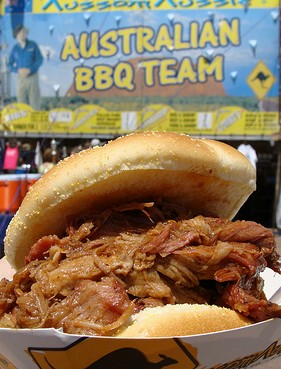 Australia is a country that loves its barbecue. It’s so popular that many public spaces actually have coin-operated grills, and with so many great beaches to have cook-outs on, it’s no surprise the tradition has taken hold. Australians love to cook up seafood, especially in the areas of Sydney and Melbourne.
Australia is a country that loves its barbecue. It’s so popular that many public spaces actually have coin-operated grills, and with so many great beaches to have cook-outs on, it’s no surprise the tradition has taken hold. Australians love to cook up seafood, especially in the areas of Sydney and Melbourne. 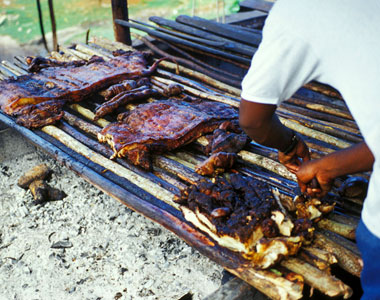 The "Jerk" in Jerk Chicken or Jerk Pork refers not to an ingredient, but to a method of cooking brought to Jamaica over 250 years ago.
The "Jerk" in Jerk Chicken or Jerk Pork refers not to an ingredient, but to a method of cooking brought to Jamaica over 250 years ago. Korean barbecue, or gogi gui, refers to the Korean method of grilling beef, pork, chicken, or other types of meat. Dishes are often prepared at the diner's table on gas or charcoal grills, built into the center of the table itself. Most diners enjoy doing their own grilling at the table. Cuts of beef, pork, and chicken are the norm, most marinated in a garlic-soy sauce mixture.
Korean barbecue, or gogi gui, refers to the Korean method of grilling beef, pork, chicken, or other types of meat. Dishes are often prepared at the diner's table on gas or charcoal grills, built into the center of the table itself. Most diners enjoy doing their own grilling at the table. Cuts of beef, pork, and chicken are the norm, most marinated in a garlic-soy sauce mixture.
Barbecue has become synonymous with Korean cuisine outside its homeland. The unique blend of cooking and dining has made it popular the world over, and Korean food can be found in nearly every major city on Earth.
Korean barbecue comes with various banchan (side dishes), among which, green onion salad called Pajori and a fresh vegetable dish including lettuce, cucumbers, and peppers invariably accompanies meat dishes at restaurants. A popular way of eating Korean barbecue is to wrap the meat with lettuce and add condiments such as - pajori (spicy scallion salad) and ssamjang (a spicy paste made of doenjang mixed with gochujang).
Mongolia Mongolian barbecue first appeared in Taiwan in the middle to late 20th century. Although the stir-frying of meats on a large, open surface is supposed to evoke Mongolian cuisine, the preparation actually derives from Japanese-style teppanyaki which was popular in Taiwan at the time. "Mongolian" barbecue is not actually Mongolian at all; for examples of genuine Mongolian food, see buuz or khuushuur. A barbecue in Mongolia is prepared quite differently. Soldiers of the Mongol Empire gathered large quantities of meats, prepared them with their swords and cooked them on their overturned shields over a large fire. while a German restaurant chain with the same concept claims that the Mongolian soldiers cooked their meals on a heated stone. The ample size of the Mongolian barbecue griddle allows for several diners' food to be cooked simultaneously on different parts of the griddle. In many restaurants (primarily buffets) one dish will be cooked at a time, the operator walking around the outside of the grill once or twice moving the food while walking. When cooking is complete, the finished dish is scooped into a bowl and handed to the diner. Lechón is so popular in the Philippines that it can usually be found year-round in street stalls and restaurants. Derived from a Spanish tradition, variations on lechón can be found throughout Latin America and the Caribbean as well, especially during the week of Christmas. It is one of the most popular Filipino street foods. Prepared by marinating meat (usually pork, though some are known to use chicken as well) and then grilling, it is traditionally served on a stick, and can be found from the lowliest sidewalk stalls to the most pretentious restaurants. Though recipes of the dish vary from place to place, sometimes even from family to family, it has always been a Filipino favorite, a staple item in every fiesta or birthday celebration. 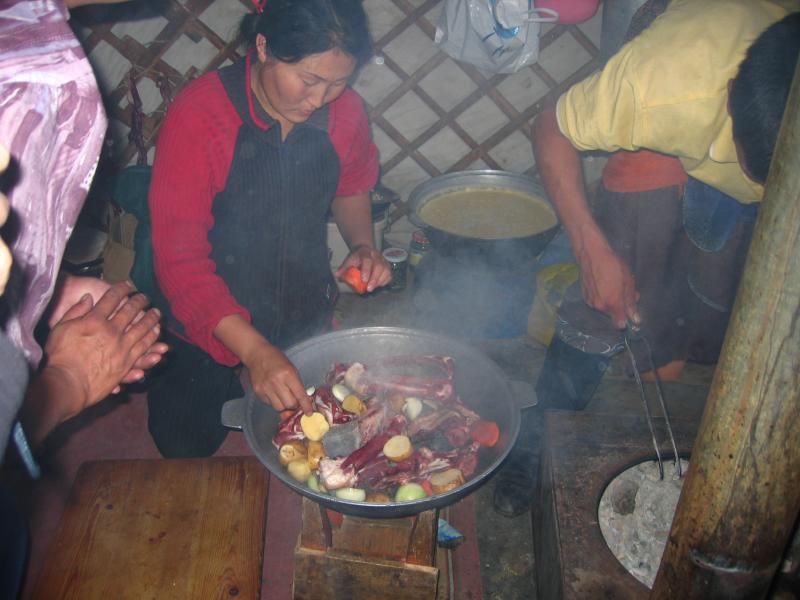 Meat has historically played a big part in Mongol cuisine, as nomadic lifestyles and poor land lend themselves better to livestock than crops. Khorkhog is the iconic Mongolian dining experience, usually reserved for special occasions or honored guests.
Meat has historically played a big part in Mongol cuisine, as nomadic lifestyles and poor land lend themselves better to livestock than crops. Khorkhog is the iconic Mongolian dining experience, usually reserved for special occasions or honored guests.  Typically, diners choose various ingredients from a buffet of thinly sliced raw meats (beef, pork, lamb, chicken, shrimp) and vegetables (cabbage, bean sprouts, sliced onion, cilantro, shredded carrots, broccoli, and mushrooms) and assemble them in a large bowl or on a plate. These ingredients are given to the griddle operator who adds the diner's choice of sauce and transfers them to one section of the hot griddle. Oil and sometimes water may be added to ease cooking, and the ingredients are stirred occasionally.
Typically, diners choose various ingredients from a buffet of thinly sliced raw meats (beef, pork, lamb, chicken, shrimp) and vegetables (cabbage, bean sprouts, sliced onion, cilantro, shredded carrots, broccoli, and mushrooms) and assemble them in a large bowl or on a plate. These ingredients are given to the griddle operator who adds the diner's choice of sauce and transfers them to one section of the hot griddle. Oil and sometimes water may be added to ease cooking, and the ingredients are stirred occasionally.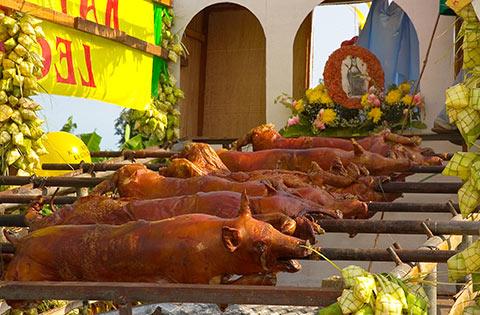 If you’ve ever been to a Filipino party, you probably remember the enormous roasted hog. Called lechón, no celebration is complete without a whole pig roasted over hot coals. The pig is brushed with its own fat, keeping the meat moist and the skin crunchy. Whole chickens and cattle are occasionally used as well.
If you’ve ever been to a Filipino party, you probably remember the enormous roasted hog. Called lechón, no celebration is complete without a whole pig roasted over hot coals. The pig is brushed with its own fat, keeping the meat moist and the skin crunchy. Whole chickens and cattle are occasionally used as well.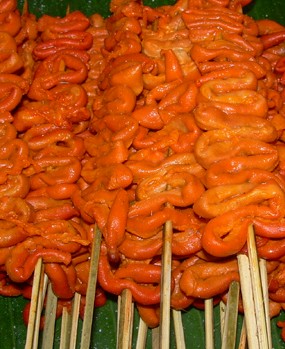 Some grilled foods include Barbecue Isaw, chicken or pig intestines marinated and skewered; barbecue tenga pig ears are marinated and skewered; pork barbecue which is a satay marinated in a special blend; Betamax that is salted solidified pork blood which is skewered; Adidas which is grilled or sautéed chicken feet. And there is Sisig a popular pulutan made from the pork's cheek skin, ears and liver that is initially boiled, then grilled over charcoal, then minced and cooked with chopped onions, chillies, and spices.
Some grilled foods include Barbecue Isaw, chicken or pig intestines marinated and skewered; barbecue tenga pig ears are marinated and skewered; pork barbecue which is a satay marinated in a special blend; Betamax that is salted solidified pork blood which is skewered; Adidas which is grilled or sautéed chicken feet. And there is Sisig a popular pulutan made from the pork's cheek skin, ears and liver that is initially boiled, then grilled over charcoal, then minced and cooked with chopped onions, chillies, and spices.
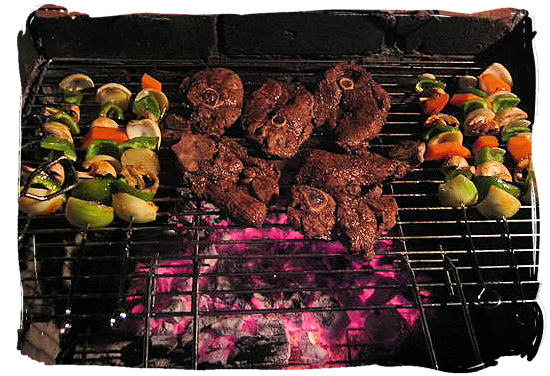 South Africans call their barbecue braai, from the Afrikaans word for roasted meat (braaivleis). Braais originated in the late 17th century as spit-roasts at fairs and celebrations, held by the Cape's Dutch governor. The braai has become a tradition in South Africa. Like most barbecues it’s very much a social event, and the role of braaier (head chef) is a coveted position.
South Africans call their barbecue braai, from the Afrikaans word for roasted meat (braaivleis). Braais originated in the late 17th century as spit-roasts at fairs and celebrations, held by the Cape's Dutch governor. The braai has become a tradition in South Africa. Like most barbecues it’s very much a social event, and the role of braaier (head chef) is a coveted position.
The range of meats used shows the braai’s many cultural influences- sausages, kebabs and steak are all standard fare. A traditional Bantu porridge called pap, similar to grits or polenta, is a popular side dish.
Differnt regions of the country have different ways of preparing and approaching braais. The people of the Southern Cape coast are known for their fish braais. A bit more north, favor the mutton and lamb which are prevalent throught out the area. In Free State (historically an Afrikaner area), spit-roasted whole-lamb braais are popular. On the east coast, in KwaZulu Natal, cooks wrap and grill barracuda and yellowtail in banana leaves and serve traditional Zulu accompaniments such as green mealie (corn) bread and fritters.
United States
 From Carolina pig-pickin’s to Kentucky mutton, the idea is the same everywhere- an outdoor party with friends, food, and beer.
From Carolina pig-pickin’s to Kentucky mutton, the idea is the same everywhere- an outdoor party with friends, food, and beer.
The meat is generally unmarinated before being put on the grill, where it’s brushed with whatever kind of sauce is available or popular. More than anywhere else, American barbecue makes use of specific kinds of wood to impart flavor in the meat: in Texas, mesquite brush is common, but hickory and oak are more readily available elsewhere.
Outside the South, culinary specifics often take a back seat to the social aspect. You’re more likely to find burgers, hot dogs, and vegetable skewers than pulled pork at a BBQ, but the soul of the barbecue is alive and well.
Styles of American Barbecue
Memphis, Tennessee
 Memphis is probably best known for its dry barbecue. Most frequently used on ribs, the dry style is highly flavorful and is less messy to eat than wet. In the dry process, the ribs are coated with a rub made from ingredients such as garlic, paprika, onions, cumin, and other spices. They are then cooked in a smoker until they are fall-off-the-bone tender. Typically, dry ribs are served with a sauce on the side.
Memphis is probably best known for its dry barbecue. Most frequently used on ribs, the dry style is highly flavorful and is less messy to eat than wet. In the dry process, the ribs are coated with a rub made from ingredients such as garlic, paprika, onions, cumin, and other spices. They are then cooked in a smoker until they are fall-off-the-bone tender. Typically, dry ribs are served with a sauce on the side.
Memphis barbecue sauce has its own distinctive flavor, as well. Though the specific ingredients will vary from cook to cook, Memphis sauce is usually made with tomatoes, vinegar, and any countless combination of spices. It is generally thin, tangy, and somewhat sweet. Memphis sauce is poured over pulled pork or served along side of dry ribs.
Nicknamed the "Pork Barbecue Capital of the World," Memphis considers itself a leader in the world of barbecue. In his book, The Grand Barbecue, Doug Worgul credits the Memphis in May World Championship Barbecue Cooking Contest, which started in 1978, as the country's oldest barbecue competition.
Meat: Smoked pork ribs on the slab, and pulled or chopped pork for sandwiches.
Sauce and Flavoring: Ribs are served with a dry rub made with ingredients like garlic, paprika, onions and cumin. The sauce, made with tomatoes, vinegar, and spices, is served on the side.
Cooking Method: Slow-cooked over indirect heat.
Side Dishes: Coleslaw and baked beans.
Kansas City, Missouri
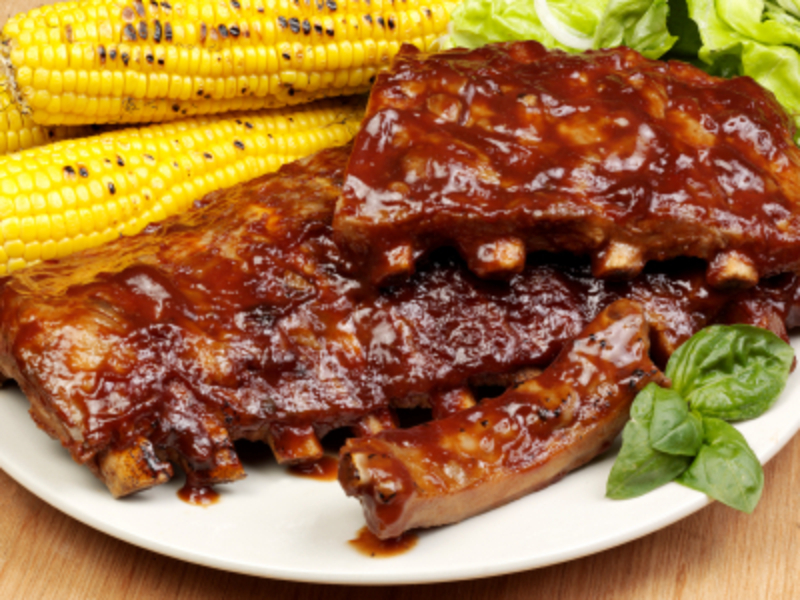 This style barbecue is characterized by its use of different types of meat (including pulled pork, pork ribs, burnt ends, smoked sausage, beef brisket, beef ribs, smoked/grilled chicken, smoked turkey, and sometimes fish) along with its sweet and tangy sauces which are generally intended for liberal use.
This style barbecue is characterized by its use of different types of meat (including pulled pork, pork ribs, burnt ends, smoked sausage, beef brisket, beef ribs, smoked/grilled chicken, smoked turkey, and sometimes fish) along with its sweet and tangy sauces which are generally intended for liberal use.
Kansas City has more than 100 barbecue restaurants and is known in Missouri as "world's barbecue capital." Ribs are mostly pork, but also come in beef varieties and can come in a number of different cuts. Burnt ends, the flavorful pieces of meat cut from the ends of a smoked beef or pork brisket, are a popular dish in many Kansas City area barbecue restaurants. Kansas City barbecue is also known 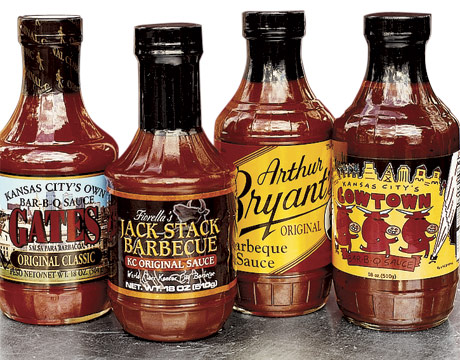 for its many side dishes, including a unique style of baked beans, french fries, cole slaw, and other soul food staples.
for its many side dishes, including a unique style of baked beans, french fries, cole slaw, and other soul food staples.
Henry Perry is known as the "Father of K.C. Barbecue." Perry is famous for the slow-cooked ribs he served for .25 cents a slab out of a trolley barn in the early 1900s. His legacy thrives with the city's countless barbecue restaurants and The Kansas City Barbecue Society, which has more than 8,000 members worldwide.
Meat: Beef and pork.
Sauce and Flavoring: The sauce is tomato-based and sweetend with molasses or brown sugar.
Cooking Method: Slow-cooked over hickory wood for as long as 18 hours.
North Carolina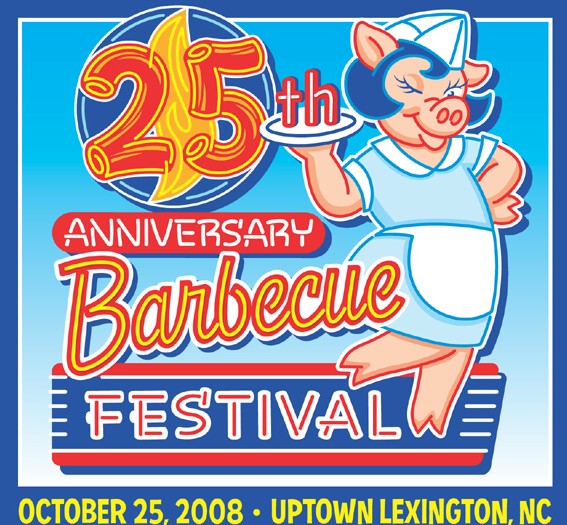 Two styles, western (aka Lexington) and eastern, dominate North Carolina barbecue. The annual Barbecue Festival has been held in Lexington, N.C. every October since 1984. According to the festival's official website, the event attracts more than 100,000 people each year.
Two styles, western (aka Lexington) and eastern, dominate North Carolina barbecue. The annual Barbecue Festival has been held in Lexington, N.C. every October since 1984. According to the festival's official website, the event attracts more than 100,000 people each year.
Sauce and Flavoring: The western style sauce is called "dip" and is a thin tomato-based sauce mixed with brown sugar and spices. In the east, the sauce is a blend of vinegar, sugar, water and pepper.
Cooking Method: Both styles are slow cooked over indirect heat with oak or hickory wood. To preserve the pork and smoke flavors the meat is never basted.
Meat: Pork shoulder (western) and whole hog (eastern) chopped or pulled.
Side Dishes: BBQ slaw, hush puppies (western), mayonnaise-based coleslaw and corn bread sticks (eastern) complement the barbecue. Sweet tea for a beverage and banana pudding or peach cobbler for dessert is served in both the western and eastern parts of the state.
The town of Lexington alone, with a population of about 20,000 people, boasts more than 20 barbecue restaurants.
Texas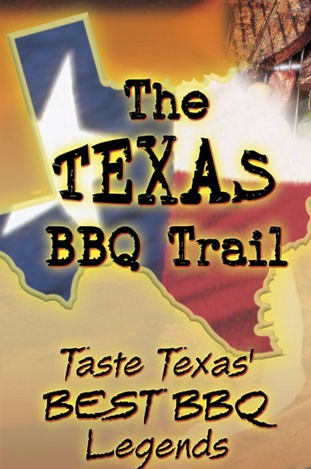 According to the Travel Channel show "Food Paradise," the state legislature declared Lockhart the BBQ capital of Texas. The Office of Texas Tourism marks the so-called "Texas Barbecue Trail" as starting just north of Austin and continuing further south to Luling.
According to the Travel Channel show "Food Paradise," the state legislature declared Lockhart the BBQ capital of Texas. The Office of Texas Tourism marks the so-called "Texas Barbecue Trail" as starting just north of Austin and continuing further south to Luling.
Meat: Beef, particularly untrimmed brisket.
Cooking Method: Slow-cooked over coals or wood in above ground smokers.
Sauce and Flavoring: No sauce is used before or during cooking. Pepper and salt are the most common seasonings. A thick tomato-based sauce with a sweet and spicy taste is served on the side of the barbecue meal.
Side Dishes: In Texas the focus is on the meat, but occasionally beans, potato salad and thick toasted white bread called Texas Toast are added to the meal. Traditional desserts include pecan or lemon chess pies.
Well there you have it! I think we can safely say that we have covered the topic of barbecue. Now all that remains is the eating. My grill has been heating up for the last 15 minutes, the ribs and shrimp marinating for the last 24 hours and veggies are all prepped and ready for grill marks. Of course, since you all have gotten to know me so well, I can't help myself but to go full circle with a little Belgian ale from this month's Passport and some dessert from our Sweet Beat page. I fully admit, this job has it's perks!
Bon Apetit and Happy Grilling!
Sources
Wikpedia.org; Texas Tourism Board; NC Tourism Board; Memphis Tourism Board; Kansas City BBQ Association;'The Grand Barbecue', Doug Worgul, Kansas City Star Books; www.3men.com


